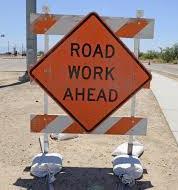Don’t Make a U-Turn on Fixing California’s Roads
This blog entry was originally published in the Orange County Register.
 There is no tomorrow when it comes to fixing our roads,
highways and bridges, which is why a misguided effort to repeal
Senate Bill 1 — a historic measure to invest more than $5 billion
a year in transportation improvements across the state — must
itself be put to rest.
There is no tomorrow when it comes to fixing our roads,
highways and bridges, which is why a misguided effort to repeal
Senate Bill 1 — a historic measure to invest more than $5 billion
a year in transportation improvements across the state — must
itself be put to rest.
The repeal initiative, filed recently with the state attorney general, would require voter approval of all gas tax and vehicle fee increases after January 1, 2017.
If allowed, it would effectively derail billions of dollars in infrastructure investment already in the planning stages — costing California tens of thousands of jobs a year and exacerbating the growing mobility and public safety crisis that years of deferred maintenance have created.
Over the next quarter century, Southern California will need to spend $275.5 billion simply to fix and preserve the roads, bridges and transportation network we already have. Even setting aside that almost unfathomable cost, the perilous path we’re on is exacting a dear price on each of us individually.
Cross any of California’s 25,000 bridges, and there’s a one in four chance that it will be structurally deficient or otherwise in need of maintenance or repairs. Meanwhile, according to research by the Fix Our Roads Coalition, the average motorist in California spends $762 per year in vehicle repairs caused by bad roads.
The problem gets worse the longer we wait. Research shows that it costs eight times more to fix a road than to maintain it. Conversely, strategic investment in transportation improvements yields a healthy return of $2 to $5 for every $1 spent.
For these reasons and more, SB1 is critical to the safety, well-being and survival of our state. The plan, which received two-thirds approval from the Legislature before being signed by Gov. Jerry Brown, increases gasoline taxes for the first time in 23 years and adds an average vehicle fee of roughly $50 per year to pay for much-needed roadway improvements.
Consider that 23 years ago, the cost of gasoline was $1.11 and the median home price in California was $185,000. And since that time, California added over 64,000 lane miles of road.
SB1 shores up glaring deficiencies in our current funding system. The adjustment to the gas tax rate is long overdue when you consider what we would, and should, be paying if the rate had been adjusted for inflation over the years.
By guaranteeing that the $5.2 billion a year that would be generated will only be used for transportation, the bill protects the interests of every Californian. Most of that money — $30 billion over the next 10 years — would be split between local road repairs and state highway repairs. The balance would improve trade corridors and major commuting corridors, fix bridges and culverts, and improve local public transportation.
SB1 is a well-conceived, well-constructed legislative answer to California’s immediate transportation needs, and creates a stronger platform to begin addressing our longer-term challenges. In our 2016-2040 Regional Transportation Plan/Sustainable Communities Strategy, the Southern California Association of Governments identified $556 billion in transportation improvements over the next quarter century — roughly half of which (the aforementioned $275.5 billion) would go toward fixing and maintaining our existing system. Helping to drive all of this, in addition to all of those years of deferred maintenance: A projected population increase of 4 million people (on top of nearly 19 million today) and continued growth in international trade and goods movement, which represents one-third of all jobs and economic activity in our six-county region.
The commitments we make now will ensure our prosperity and preserve our quality of life today and for decades to come.
SB1 is a critical first step.
Hasan Ikhrata is executive director of the Southern California Association of Governments, the nation’s largest metropolitan planning organization representing six counties, 191 cities and nearly 19 million people.








































